2023 BMW X1 Review and Test Drive
All new and much improved, the 2023 BMW X1 is a subcompact crossover that is anything but substandard.
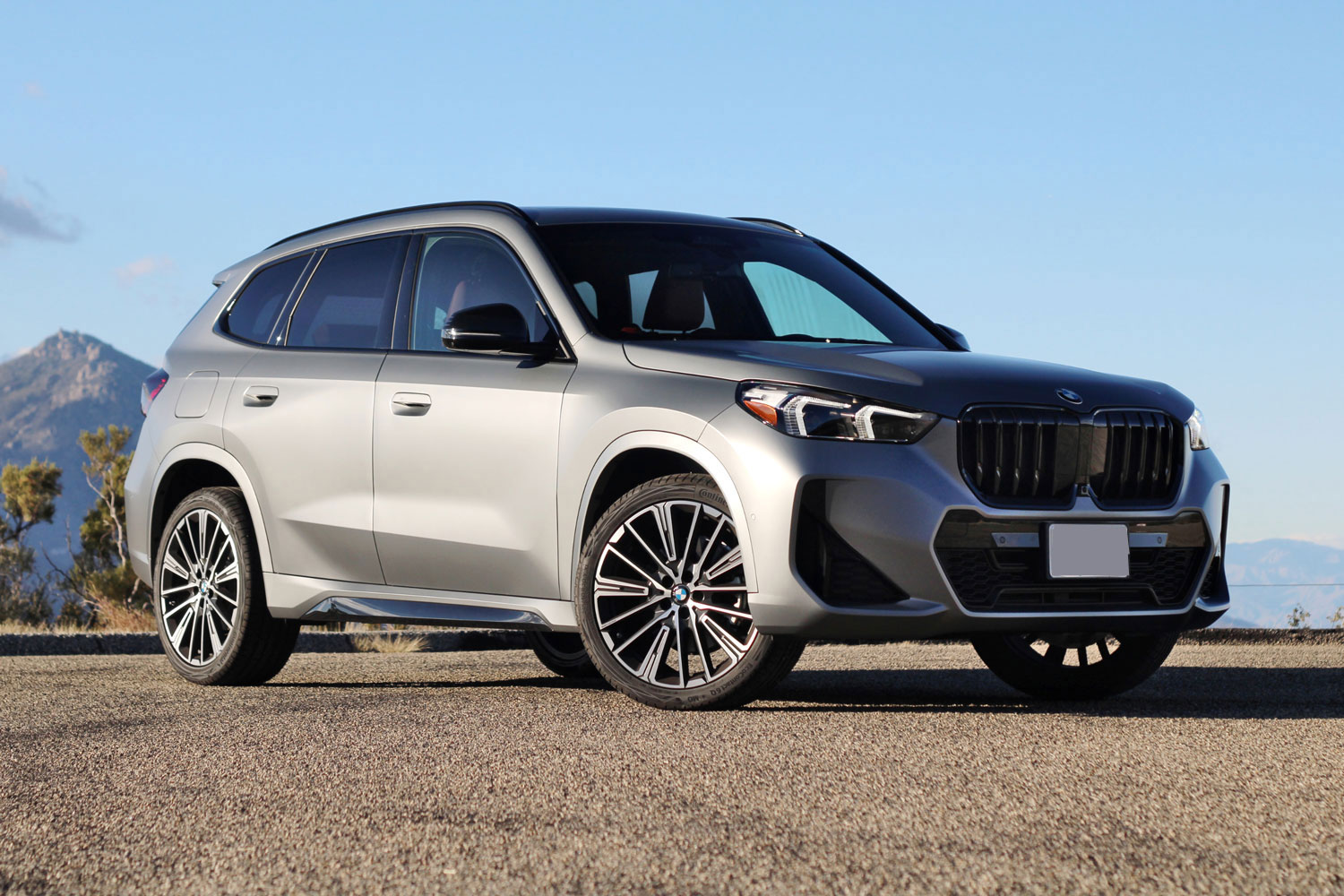 Beverly Braga
Beverly Braga
Completely redesigned for 2023, the third-generation BMW X1 offers increased power, improved fuel efficiency, new safety features, and updated technology. As its name implies, the 2023 BMW X1 is on the smaller end of BMW’s crossover SUV lineup. Along with the X2, it’s the only SUV the company doesn’t build at its manufacturing facility in Spartanburg, S.C. But being assembled elsewhere doesn’t mean the X1 is small potatoes.
In the U.S., crossovers and SUVs account for a large chunk of the automotive sales pie. BMW happens to be the leading automotive exporter by value for the last eight years and more than 53% of its sales in 2021 were crossover SUVs. That figure has only increased in 2022, with CUV sales through the third quarter comprising 62% of the total units sold. The X1 might not be the best seller among BMW crossover SUVs—that crown goes to the X3—but it does offer consumers a compelling first step into the world of BMW’s sporty crossovers.
Like its predecessor, the 2023 BMW X1 is available in a single trim: xDrive28i. Unlike the previous generation, however, BMW equips the all-new X1 with standard xDrive all-wheel drive (AWD). The BMW X1’s base price is $39,595, which includes the $995 destination charge to ship the SUV from the factory in Regensburg, Germany, to your local dealership.
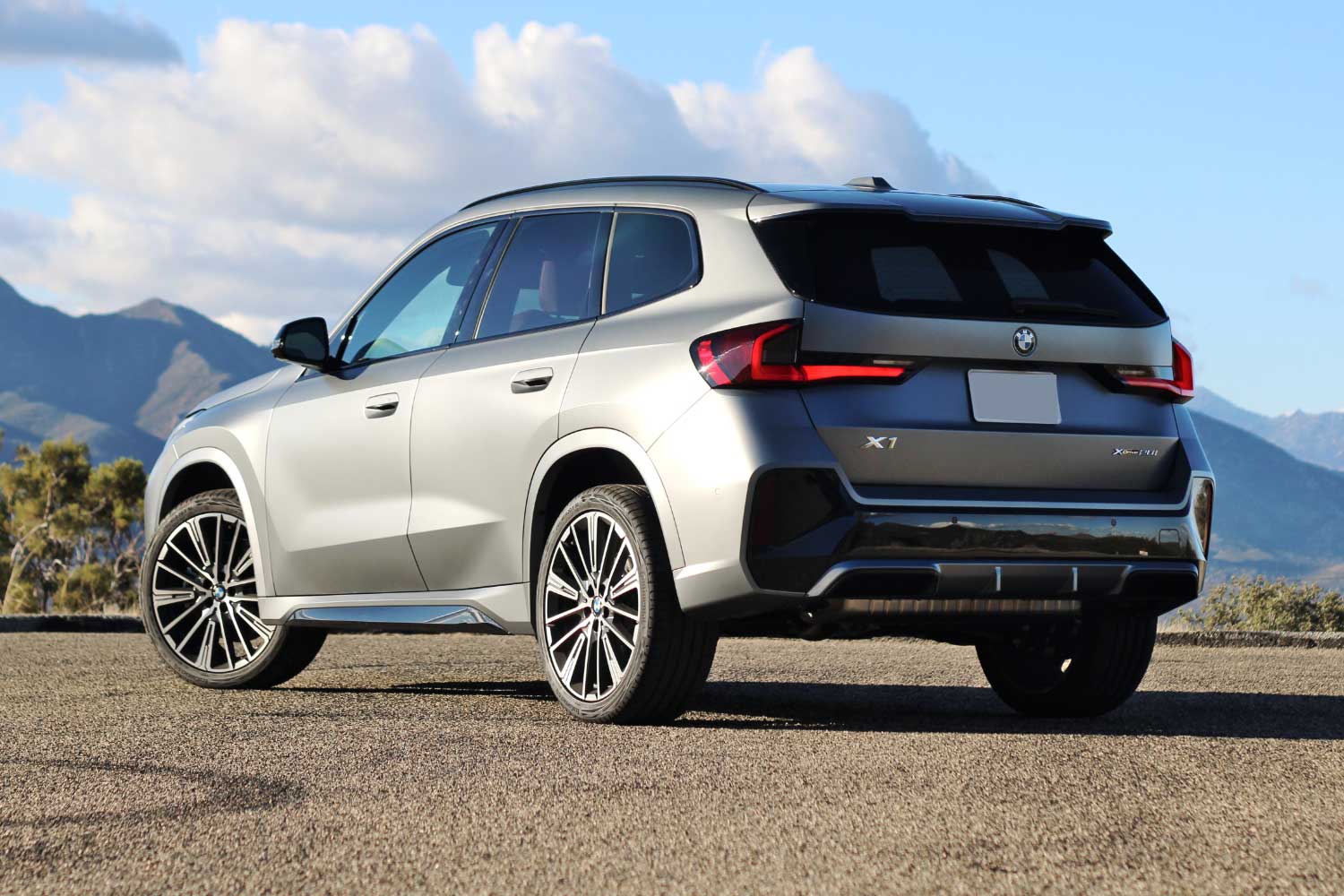 Beverly Braga
Beverly Braga
For this X1 review, I test-drove two specifications of the X1 xDrive28i in Palm Springs, CA. Both X1 SUVs came with the Premium package, xLine package, sport seats, heated front seats and steering wheel, remote engine start, 19-inch premium wheels, and extra-cost paint. One of the test vehicles also had the Shadowline and M Sport packages, bringing the manufacturer’s suggested retail price (MSRP) to $50,795, including the destination charge. The non-M Sport version had a total MSRP of $46,795. BMW provided the vehicles for this X1 review and paid for airfare, lodging, and meals during the evaluation period.
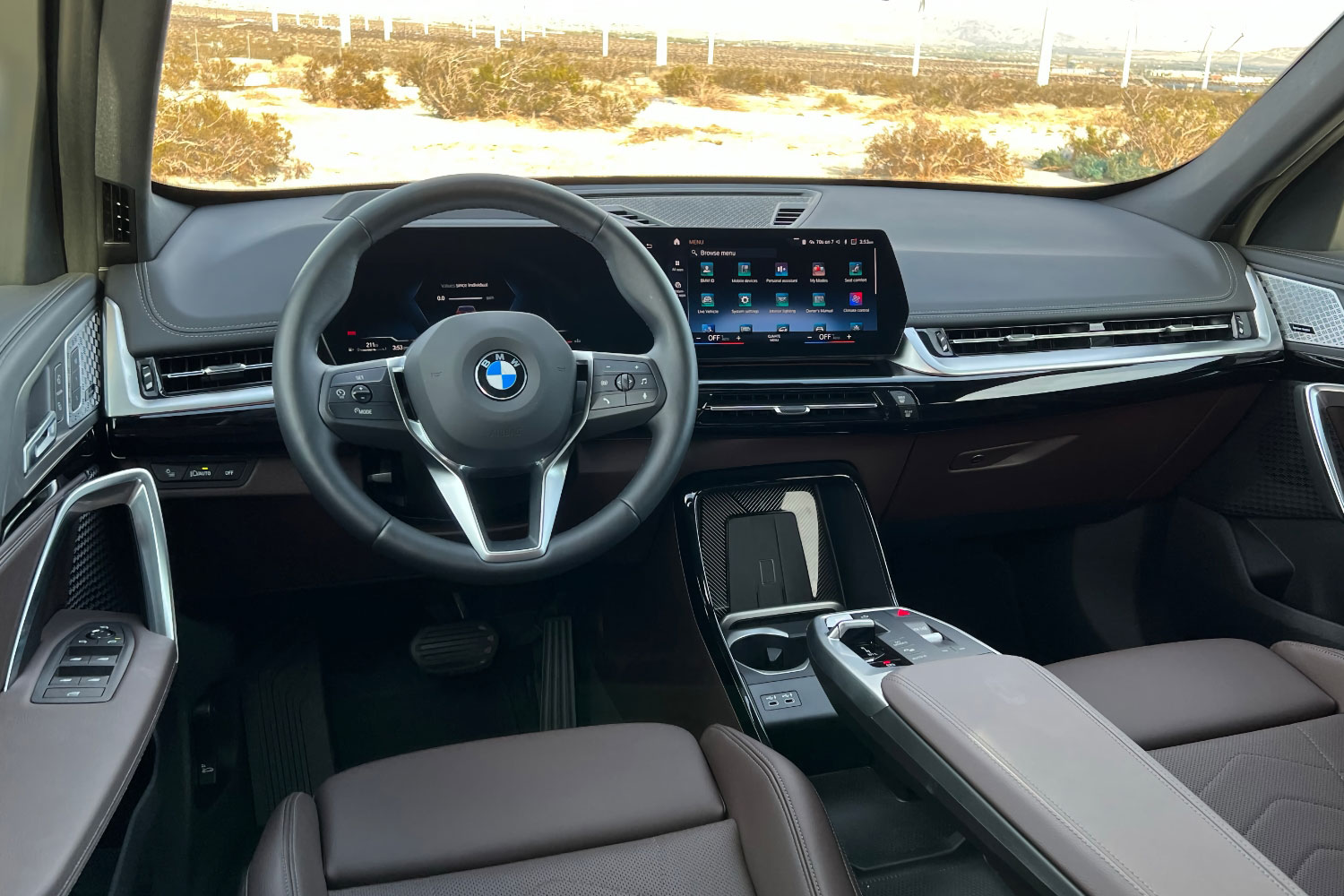 Beverly Braga
Beverly Braga
2023 BMW X1 Review: The Design
The 2023 X1 gains overall girth but does so in a toned and defined way. No chunky bits here, just muscular fenders, flares, and front and rear features. The X1 sits on a new wheelbase that is 0.9 inches longer than before, now measuring 106.0 inches. Length and height each increase by 1.7 inches to 177.2 and 64.6 inches, respectively. The vehicle also grows 0.9 inches in width to 72.6 inches. Still considered a subcompact SUV but hardly diminutive, the wider and taller X1 showcases substantial proportions without looking too bulky.
The signature kidney grille remains tastefully proportionate but is more square than on the outgoing model, which projected a softness. BMW matches the reshaped grille with an equally pronounced jawline. The automaker also tidied up the lower front fascia, exposing more face with a black lower-edge trim typical of newer BMW X models.
The BMW X1 evokes lean length from the side thanks to a sleeker greenhouse and a spoiler that extends farther out over the rear glass. The rear also sees subtle changes with reshaped taillights, an aggressively styled lower-edge black trim (matching the front), and a restyled rear bumper trim plate.
The X1 interior is where big changes for the small SUV occur. The cabin layout is refreshingly clean. The center stack is no more; in its place is a long single-piece air vent. BMW 86’d the gear shifter in favor of a toggle-style selector on the armrest. This new control panel is flush with buttons for the engine start/stop, My Modes functions, and volume settings.
Of course, everything looks nice and pretty, but in everyday driving I often found myself looking down to select buttons instead of reaching for the now-missing singular iDrive control knob. Don’t know what you’ve got till it’s gone, huh? The X1 is a small vehicle, so reaching out for the center touchscreen display is hardly a stretch. But after two decades of forcing BMW drivers to use the iDrive rotary knob, why take it away now? And in exchange for flat buttons and toggle scrollers?
The new center armrest is quite long and thus provides ergonomic comfort when accessing the control panel. The design resembles an airline armrest, and with no shifter in the way there is a lot of usable storage space underneath. Unfortunately, you can’t raise it as you would on a plane. BMW positioned it under the control panel and on the passenger side, which minimizes access to the storage trays from that seat.
At least the seats are comfortable, with supportive side and thigh bolsters. Standard upholstery is SensaTec artificial leather. Genuine leather is not an option on any X1, but the vegan variety is available in a few variations, including perforated or trimmed with Alcantara.
Other materials include gloss, metal, and wood interior trim, but there’s also plenty of matte plastic. One highlight is the stainless-steel grille over the integrated door tweeters. Available with the optional Harman/Kardon sound system, the non-overlapping crosshatch pattern on the grille adds a high-quality feel to an otherwise basic interior door design.
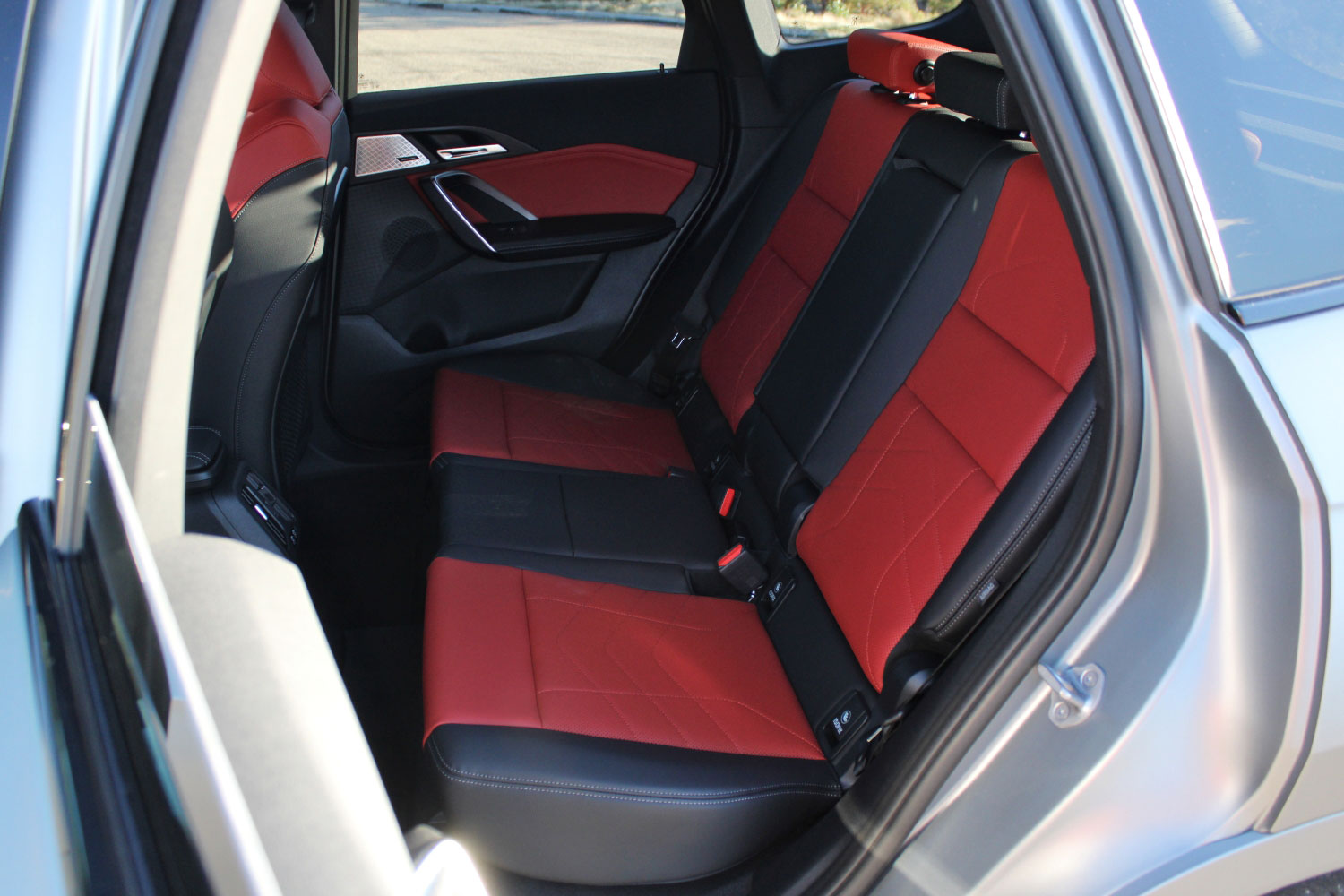 Beverly Braga
Beverly Braga
The X1 offers seating for five, but even with its new larger dimensions and greater interior space, the rear can be a tight fit for three fully grown adults.
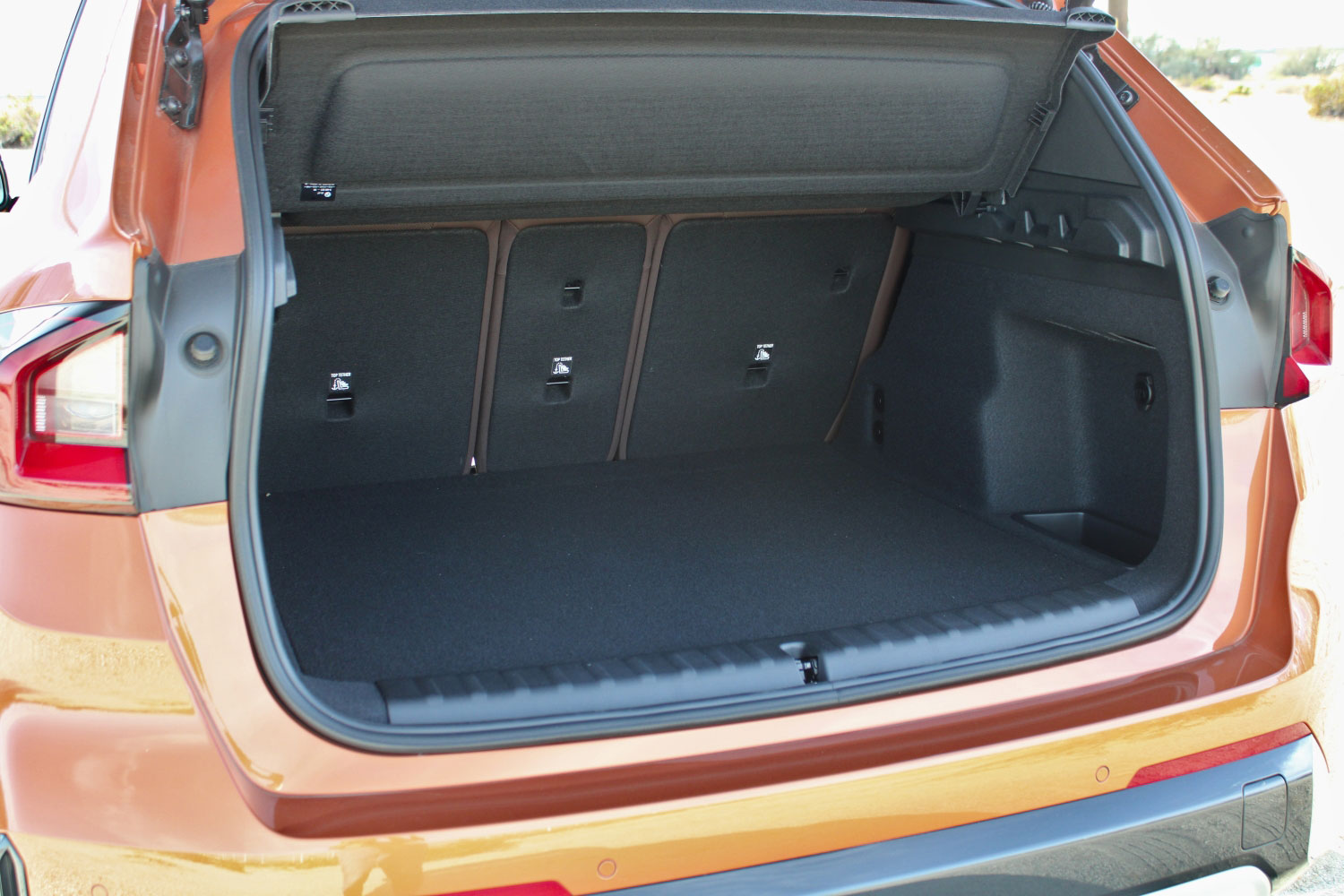 Beverly Braga
Beverly Braga
In terms of cargo capacity, BMW lists the trunk storage as less than the previous model. The 2023 X1 offers 25.7 cubic feet of space behind the second-row seats. This increases to 57.2 cu. ft. with the 40/20/40-split rear seats folded down. Comparatively, the previous-generation X1 offered 27.1 cu. ft. of cargo space and up to 58.7 cu. ft. with the rear seats down.
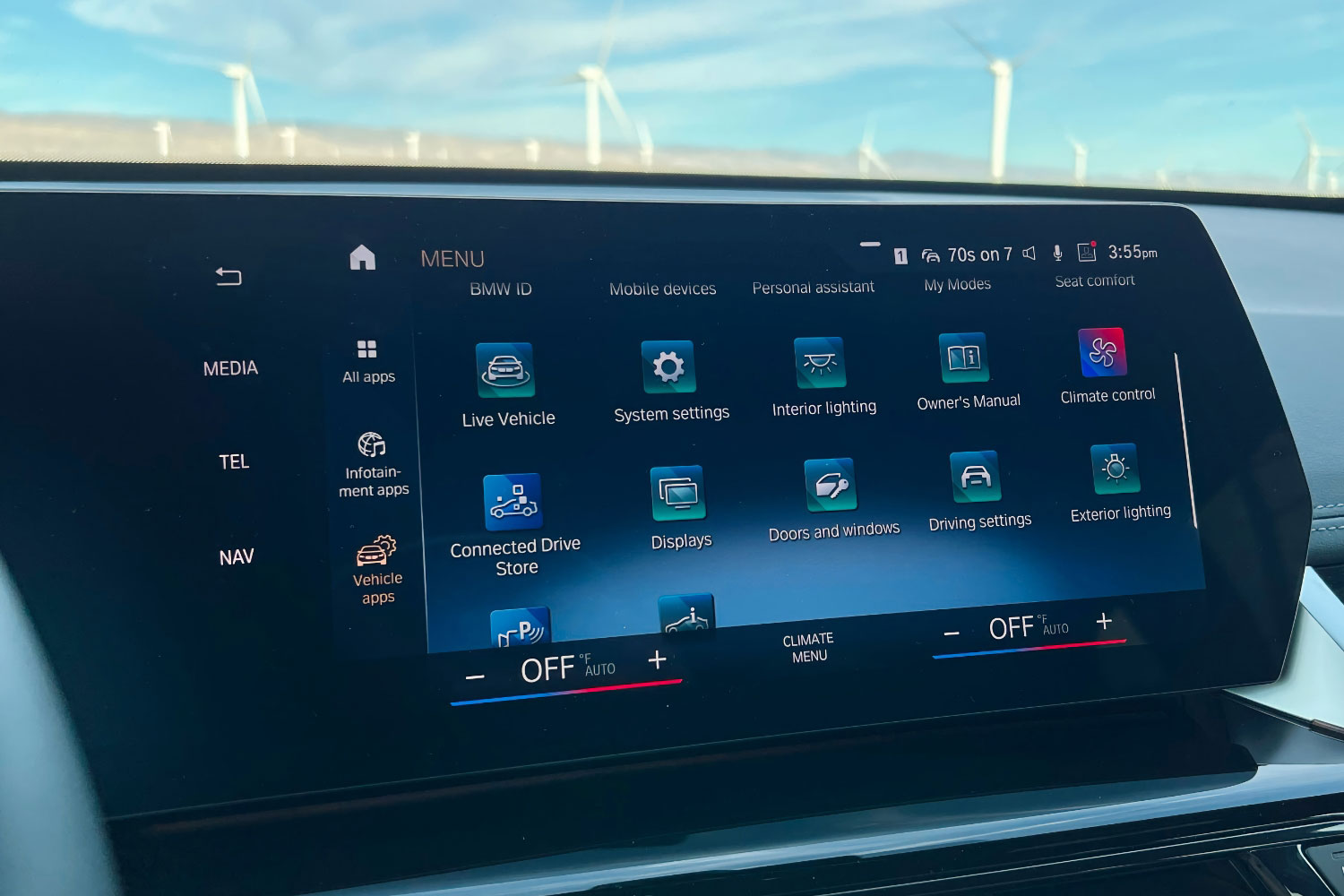 Beverly Braga
Beverly Braga
2023 BMW X1 Review: The Technology
Part of the reason for the X1’s updated interior is the implementation of BMW iDrive 8 infotainment system. First introduced on the automaker’s “i” sub-brand of electric vehicles such as the iX and i4, iDrive 8 is trickling down into other Bimmers. BMW’s latest generation of in-car technology is not only highly advanced and lightning fast, but the automaker also pairs it with the new BMW Curved Display.
An all-new vehicle information and infotainment package, the Curved Display is a beautifully designed, frameless, single-glass surface that seamlessly blends the instrument cluster and center touchscreen display. The iDrive 8 tech and Curved Display are standard on the X1, but sizing varies for other BMW models. For example, in the i4 Gran Coupe, Curved Display combines a 12.3-inch digital cluster with a 14.9-inch touchscreen. The X1 has a 10.25-inch instrumentation panel paired with a 10.7-inch center display, and it’s the right size for the vehicle. Any more prominent and the X1 interior would appear to be overcompensating.
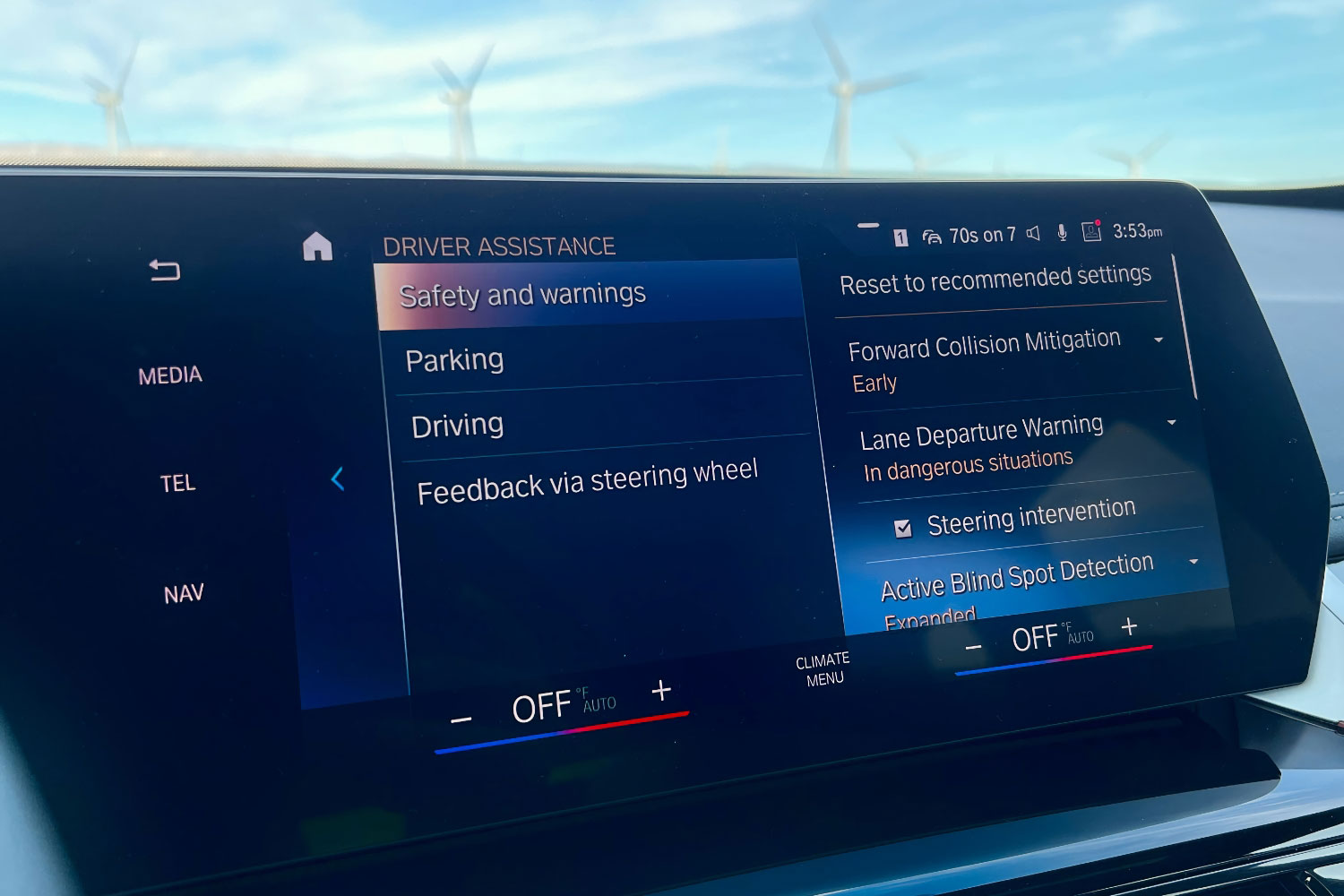 Beverly Braga
Beverly Braga
Standard infotainment technology on the X1 includes Live Cockpit Plus, BMW Intelligent Personal Assistant, wireless Android Auto and Apple CarPlay integration, BMW ConnectedDrive upgrade, cloud-based BMW Maps, and over-the-air software update capability. A seven-speaker high-fidelity sound system provides audio entertainment and comes with a one-year complimentary subscription to SiriusXM satellite radio. My test vehicles featured additional equipment such as Live Cockpit Professional, wireless device charging, a 12-speaker Harman/Kardon surround-sound audio system, and an interior camera.
High-definition graphics plus easy-to-read icons and fonts made iDrive 8 intuitive. The system allows for driver-specific customizable menus and settings. Perhaps there is too much customization; BMWs are notorious for their extensive multilevel menus just to, for instance, find the head-up display settings.
Thankfully, the Intelligent Personal Assistant understands natural-speech voice commands. There is no need to look at the owner’s manual and learn prepared commands. Start with “Hey, BMW” (or create a “wake word” of your choice), and the system is ready for your infotainment wishes. Drive modes, temperature settings, navigational directions—just ask.
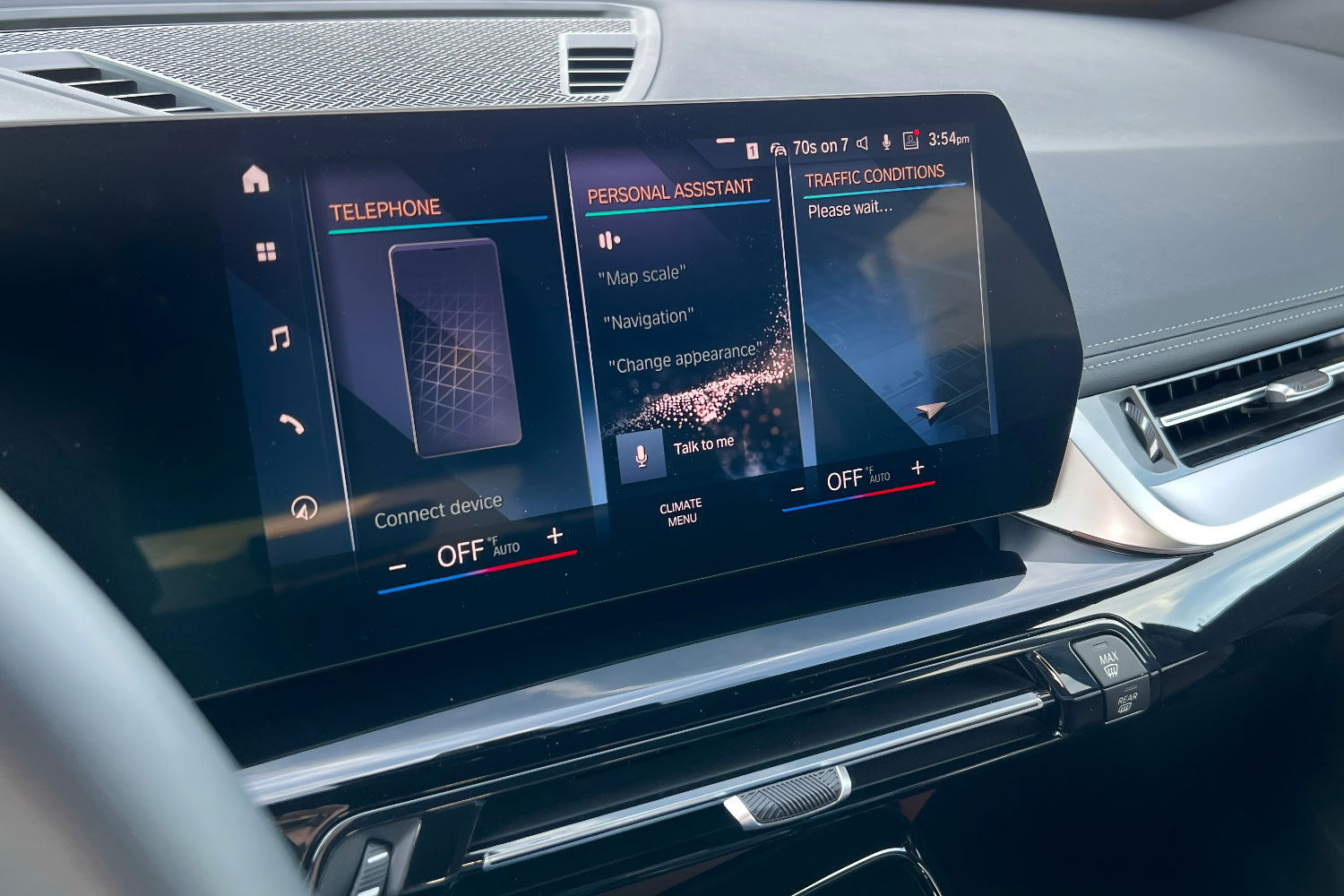 Beverly Braga
Beverly Braga
There is also much more tech in the safety department. The X1 is the entry-level crossover SUV of the BMW family, but it has a range of advanced driver-assistance systems (ADAS) for the crossover. Active Driving Assistant is standard on all X1s, and the safety suite includes forward-collision warning, blind-spot monitoring, lane-departure warning, and speed limit info. Other standard safety equipment includes LED daytime running lights, automatic high-beam headlights, a rearview camera, BMW Assist eCall, and front and rear Park Distance Control.
The Premium package includes Live Cockpit Professional with a head-up display, a surround-view camera with a 3D view, an interior camera, Parking Assistant Plus, Active Park Distance Control, and auto-dimming rearview, interior, and outside mirrors. Available later in the production cycle is Driving Assistance Professional. A first-time X1 offering, the package will add adaptive cruise control with stop-and-go functionality, extended traffic-jam assist, speed limit assist, and Steering and Lane Control Assistant. Due to supply-chain shortages, the ADAS package wasn’t available when I drove the X1.
Driving Assistance Professional would make all the difference with the X1. Without it, the vehicle seems to lack semi-autonomous safety features, especially at its price point. However, the blind-spot monitoring, lane-departure warning, and automatic emergency braking system, which have become standard for nearly every new car, function as designed in the X1. Neither is overly intrusive in its warnings and corrective steering. The backup camera also provides an image that takes advantage of the iDrive 8’s high-resolution 200-ppi graphics. Outside of that, without adding the optional advanced safety features, the X1 feels behind the times.
As of this writing, neither the National Highway Traffic Safety Administration (NHTSA) nor the Insurance Institute for Highway Safety (IIHS) has rated the crashworthiness of the 2023 BMW X1.
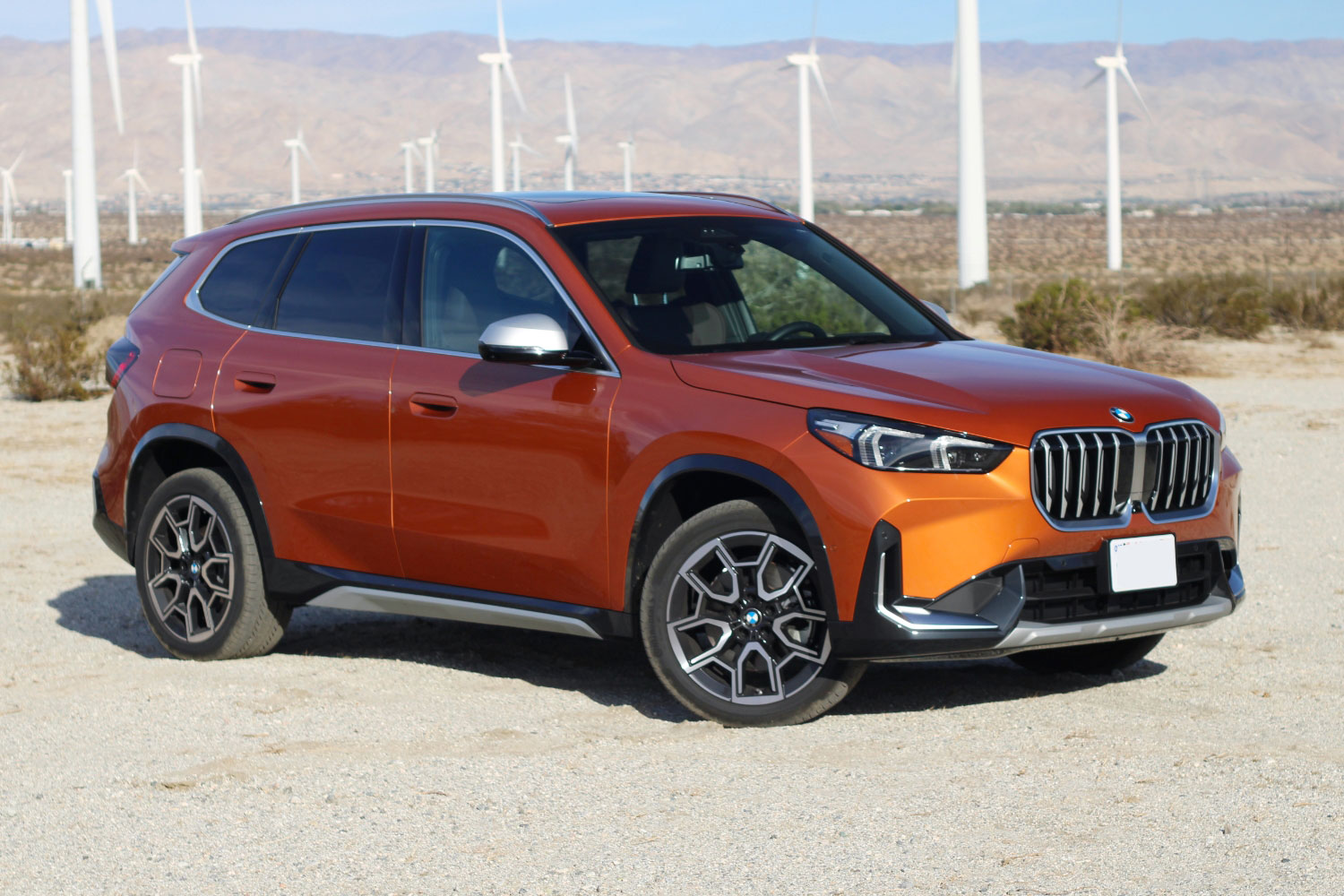 Beverly Braga
Beverly Braga
2023 BMW X1 Review: The Drive
Because the BMW X1 is available only as an xDrive28i variant, they all have the same powertrain. Under the hood you’ll find a turbocharged 2.0L four-cylinder engine that produces 241 hp and 295 lb.-ft. of torque. Although the engine size is the same as the previous generation, BMW tuned it to add 13 hp and 37 lb.-ft. of torque. A seven-speed dual-clutch transmission is all new, and AWD is now standard. According to BMW, the X1 can sprint from zero to 60 mph in 6.2 seconds, which is a tenth of a second faster than the previous model.
In the X1, BMW refers to the drive modes as My Modes, and you get three choices: Personal, Sport, and Efficient. As expected, the vehicle automatically adjusts the engine, transmission, and steering depending on which mode you select.
My Modes goes a step further to add ambiance by changing screen graphics and interior lighting. When in Sport mode, the digital display turns red as if the vehicle has suddenly transformed into a maniacal race car. Although the system firms up the steering feel and adjusts the gearing for spirited driving, the X1 is still a small commuter SUV. Nevertheless, it is surprisingly agile and handles well around fast corners. With standard AWD and sharp on-point braking, the X1 is a happy little canyon carver.
The Palm Springs area offers a variety of driving conditions, roads, and surfaces. Interstate 10 has a 70-mph speed limit for flat straights and high-speed testing, downtown provides slow-and-go traffic, and Highway 74 is an elevation-changing twisty mountain course.
I spent most of my time on Highway 74 because it’s a fun road and because it’s quiet. If there are any engine noises to enjoy, this is where I would hear them, but the X1 doesn’t provide much of a soundtrack. It could be a testament to how quiet the cabin is and/or how temperate the engine is.
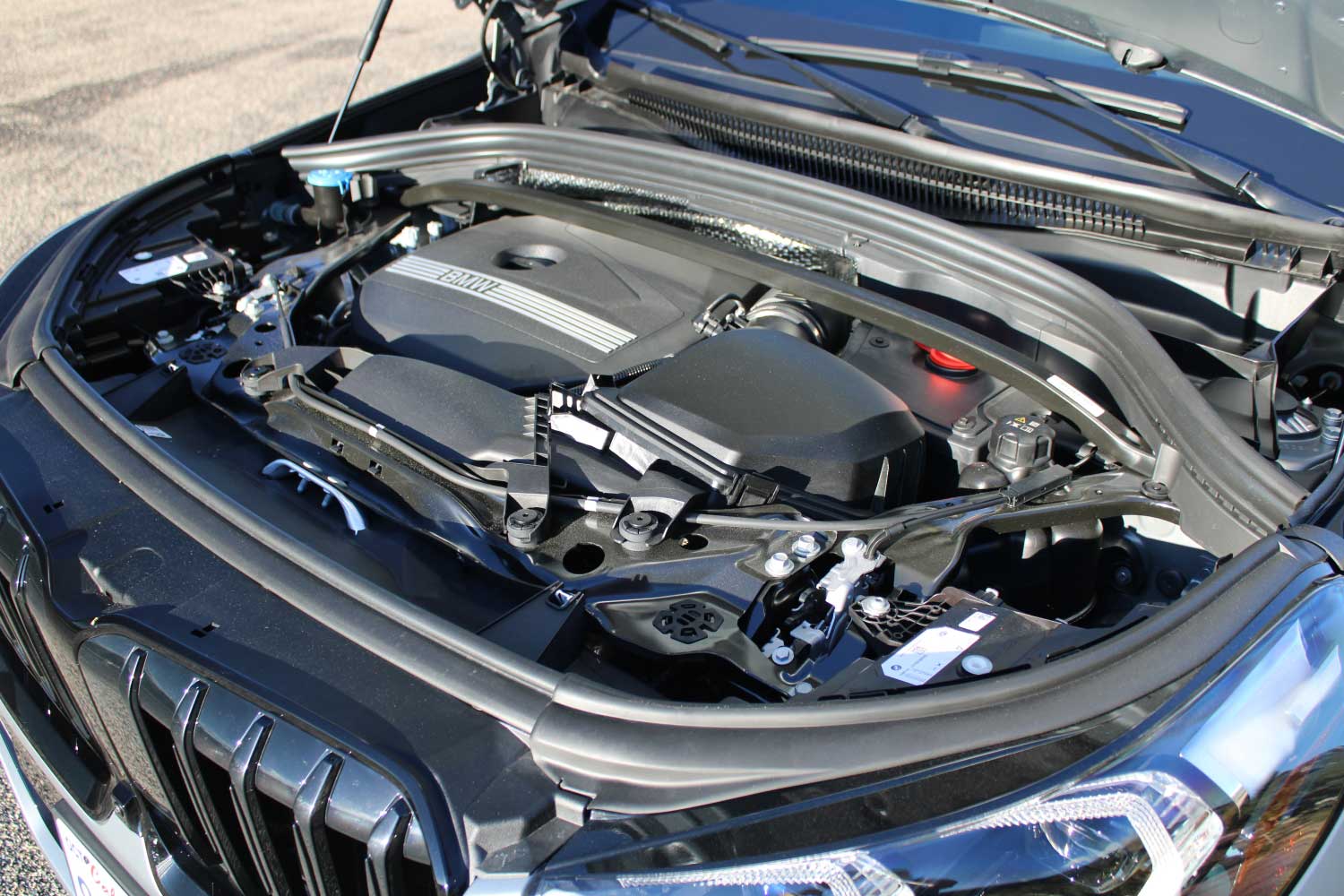 Beverly Braga
Beverly Braga
The turbo-four does provide ample power for those hill climbs and when passing. Although the X1 never felt underpowered, there is a bit of turbo lag. With its paddle shifters, the M Sport trim alleviates this to some degree. Still, DIY paddle shifting won’t completely quell the delay. I also wished the paddles extended out farther. I had to fully extend my fingers to reach them, and on more than one occasion I inadvertently hit the wiper controls. That said, the X1 M Sport makes up for it with its exclusive boost function.
The M Sport includes appealing aesthetics, such as the black trim-focused Shadowline package, plus performance upgrades in the form of an aero kit, adaptive M suspension, an M steering wheel, and the aforementioned paddle shifters. Most important is the left paddle labeled “Boost.” Activation requires you to simply hold down the paddle for a second, effectively priming the X1 for maximum and immediate acceleration. The feature is available only when the vehicle is in motion, so don’t go racing your X1 for pinks.
With the 2023 redesign, the X1 is available for the first time with 20-inch wheels. Wrapped in performance non-runflat rubber, buyers can option the bigger wheels on any X1. BMW outfitted my M Sport-equipped X1 test car with the 20s, while the Premium package X1 wore 19s with all-season tires. Neither exhibited any ride stiffness or poor handling. Ride quality was comfortable and compliant on every road surface I encountered.
On the freeway, the X1 accelerated to higher speeds quickly so merging was never an issue. The cabin is relatively quiet, but I noticed some noise from the outside mirrors. I opted for the Personal My Mode during the highway drives for added comfort but selected Efficient when back in the city. Efficient is configured for fuel-sipping, so the gearing is long. This can be annoying on the highway, especially with the existing turbo lag. But when driving from one red light to another, it’s not a big deal.
 Beverly Braga
Beverly Braga
Fuel economy is up despite the increased power. The 2023 X1 has an Environmental Protection Agency (EPA)-estimated rating of 25 mpg city/34 mpg highway/28 mpg combined. The previous AWD model offered 23/31/26 mpg. During my test drives, I averaged 25.8 mpg. Although that’s less than the listed combined fuel rating, my routes included a little bit of everything, and at no time was I trying to conserve fuel. As always, your mileage may vary.
Curiously, the new X1’s fuel tank holds a couple gallons less than before (14.3 versus 16.1 for the 2022 X1). But with the increased fuel efficiency, the X1 can still achieve almost 400 miles of range on a full tank.
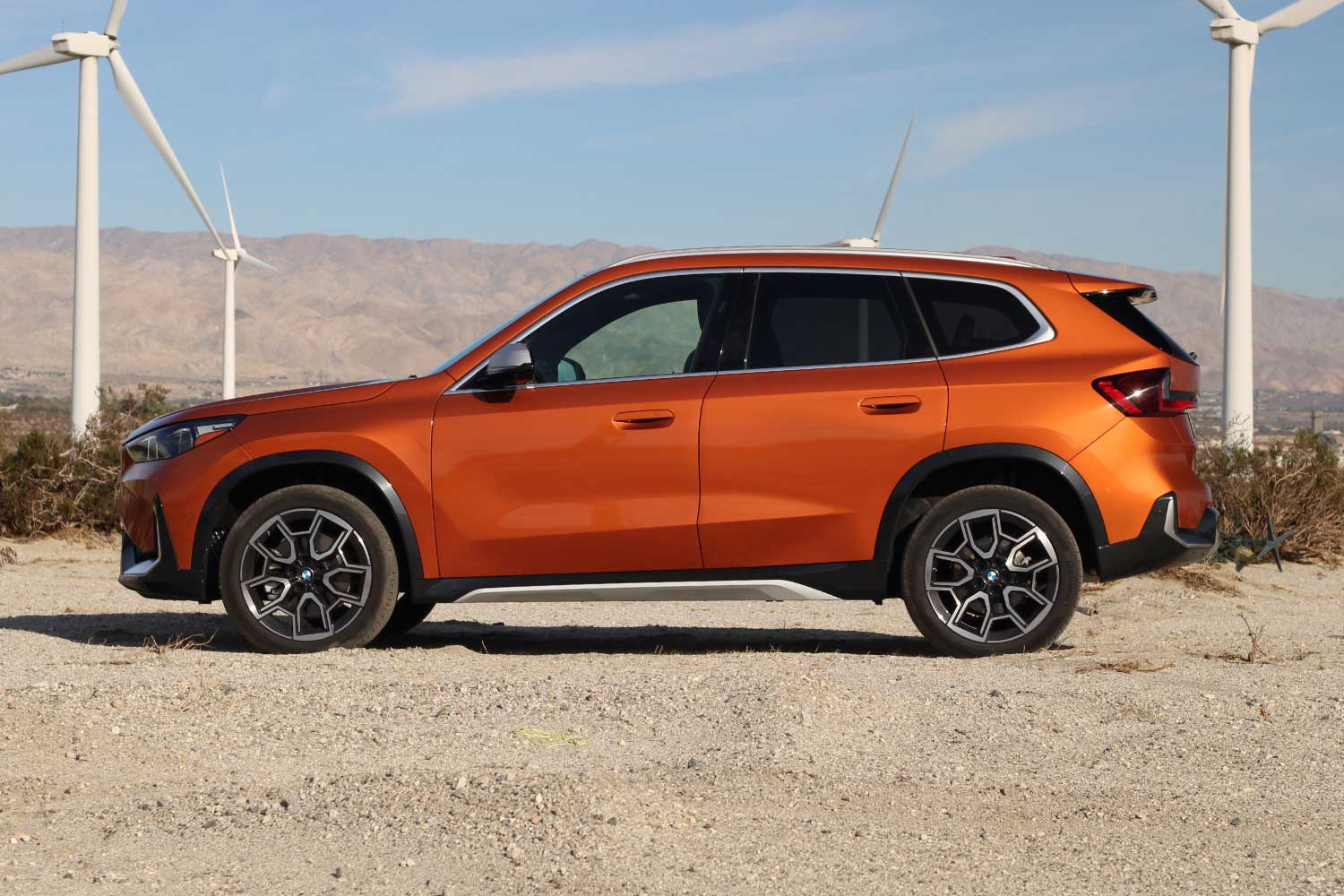 Beverly Braga
Beverly Braga
Is the 2023 BMW X1 a Good SUV?
Small crossover SUVs are, by and large, the go-to alternative for consumers who may have previously purchased a mid-size sedan. With added passenger and cargo capacity, small crossovers don’t have the stigma of being just a car. And in the luxury segment, you really can’t go wrong with the BMW X1. The redesigned 2023 X1 is bigger and better in every way. Dynamics, design, fuel economy—all are improved.
I will, however, ding BMW for taking away the X1’s iDrive controller. The rotary dial has been a point of consumer frustration since its introduction in 2001, but is it even a BMW if it doesn’t have that large control knob? Also, the X1 offers the most basic standard safety features. You pay extra for the good stuff.
Here’s hoping that changes soon, making the new X1 an even tougher competitor to ignore in the affordable small luxury SUV market.
Written by humans.
Edited by humans.
 Beverly Braga
Beverly BragaBeverly Braga is a freelance writer and consultant with nearly 20 years of experience as a storyteller and communications professional. Her work has appeared in numerous print and digital outlets covering the automotive, entertainment, lifestyle, as well as food and beverage industries.
Related articles
View more related articles